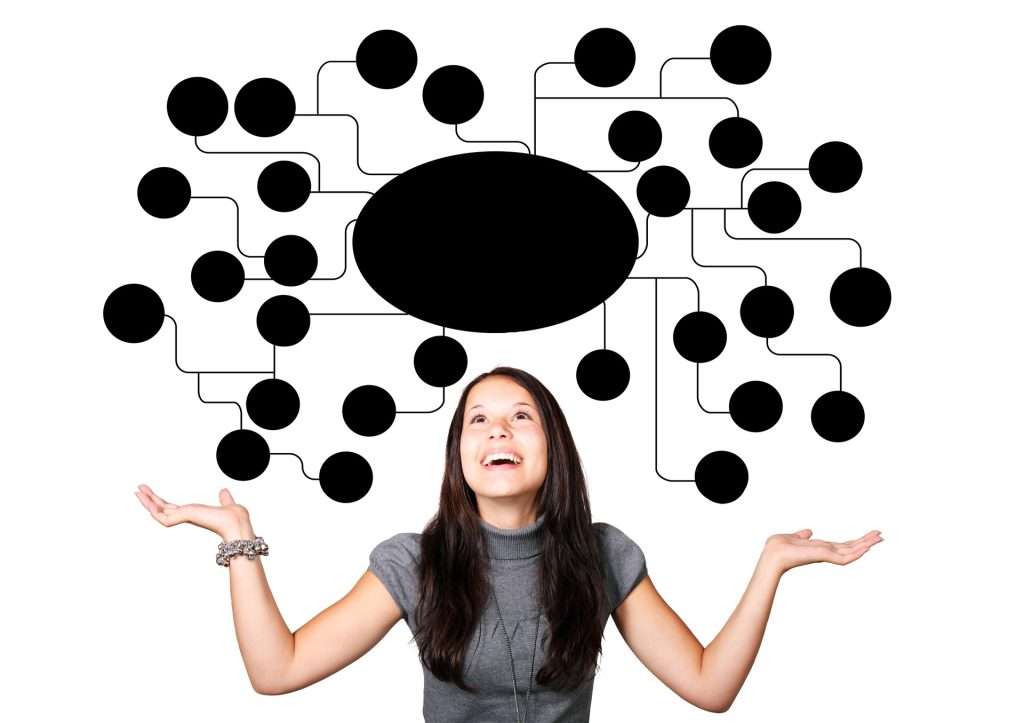Revolutionize Your Study Sessions: Harnessing the Power of Mind Maps
Introduction
In the modern, rapidly evolving realm of education, discovering efficient study methods is crucial for academic success. One such technique that has gained significant popularity is the use of mind maps. Mind maps, a visual representation of ideas and concepts, offer a unique way to organize and synthesize information, fostering a deeper understanding and enhancing memory retention.
Understanding the Science behind Mind Mapping
To fully appreciate the power of mind maps, it’s important to grasp the cognitive processes involved in learning. Our brains naturally make connections and associations between ideas, and mind maps align perfectly with this innate function. By visually connecting related concepts, mind maps stimulate multiple regions of the brain, resulting in a deeper understanding and improved recall.
Getting Started with Mind Mapping
To harness the full potential of mind maps, selecting the right tools and materials is essential. Whether using traditional pen and paper or digital mind mapping applications, it’s important to choose a format that suits individual preferences. Additionally, creating an effective study environment, free from distractions, allows for optimal focus and concentration.
Essential Techniques for Creating Mind Maps
Creating effective mind maps involves several key techniques. Firstly, establishing a central theme or topic acts as the foundation for the map. From there, using concise keywords and incorporating visual elements, such as images or icons, enhances understanding and aids memory recall. Finally, connecting ideas and creating branches allows for a comprehensive representation of the relationships between different concepts.
The Strategic Use of Colors and Symbols in Mind Maps
Understanding the impact of colors on memory retention can be an invaluable tool when creating mind maps. Colors stimulate different parts of the brain and can enhance the encoding and retrieval of information. Additionally, incorporating symbols and icons into mind maps can serve as powerful mnemonic devices, aiding in long-term memory retention.
Enhancing Learning with Mind Maps: Applying Different Learning Styles
Mind maps cater to various learning styles, particularly benefiting visual learners. The visual nature of mind maps allows for the easy assimilation of information and aids in the retrieval of knowledge. However, mind maps can also be adapted for auditory and kinesthetic learners by incorporating verbal cues and physical actions into the mapping process.
Mind Mapping for Effective Note-Taking
For those seeking to improve their note-taking skills, mind maps offer a revolutionary approach. Transforming traditional linear note-taking methods, mind maps allow for the organization and summarization of complex information in a more intuitive and visually appealing manner. By condensing information into a concise and interconnected format, mind maps facilitate easier review and understanding.
Simplifying Complex Concepts with Mind Maps
Complex subjects can often feel overwhelming, but mind maps provide a solution for breaking them down into manageable sections. By organizing intricate topics into hierarchical structures, mind maps enable learners to grasp the big picture while also identifying key relationships and connections within the subject matter. This approach promotes a deeper understanding of complex concepts.
Boosting Creativity and Problem-Solving through Mind Maps
Mind maps have the unique ability to tap into non-linear thinking, unleashing one’s creativity and aiding in problem-solving endeavors. By encouraging the exploration of ideas and connections outside of traditional linear thinking patterns, mind maps facilitate the generation of innovative solutions. Whether used individually or within a group, mind maps provide a versatile tool for tackling complex problems.
Collaborative Mind Mapping: A Team Approach to Study Sessions
For those seeking a collaborative and engaging study experience, group mind mapping exercises can prove highly effective. By combining the perspectives and insights of multiple individuals, collaborative mind mapping maximizes productivity and encourages brainstorming. This approach fosters teamwork and allows for the pooling of knowledge and ideas, leading to a more comprehensive understanding of the subject matter.
Mind Mapping for Exam Preparation and Revision
Exam preparation can be incredibly daunting, but mind maps offer an efficient and comprehensive way to create study guides. By condensing the necessary information onto a single page, mind maps provide a concise overview of the entire subject, enabling efficient review and reinforcement of knowledge. Various mind mapping techniques, such as color-coding and the use of keywords, enhance memory recall during exams.
Adapting Mind Maps for Digital Platforms and Applications
As technology advances, the integration of mind maps into digital platforms and applications has become increasingly popular. These tools offer added flexibility and convenience, allowing for the easy editing, sharing, and collaboration of mind maps. However, it’s important to consider the benefits and downsides of digitalizing mind maps, ensuring they still serve their purpose in enhancing studying techniques.
Mind Mapping for Long-Term Knowledge Retention
To prevent the forgetting of valuable information, it’s essential to develop strategies for reviewing and revisiting mind maps over time. By periodically revisiting mind maps, learners solidify their understanding and reinforce key concepts, ultimately improving long-term memory retention. Incorporating mind maps into regular study routines ensures the continual reinforcement of knowledge.
Overcoming Common Challenges with Mind Mapping
While mind maps are a powerful tool, they can present challenges, particularly when dealing with vast amounts of content. Addressing issues of information overload requires effective organization and structuring techniques. Furthermore, prioritizing ideas and creating a logical flow within mind maps can be challenging. Understanding these common pitfalls and employing strategies to overcome them is vital for effective mind mapping.
Measuring Success: Evaluating the Effectiveness of Mind Maps
Evaluating personal progress and improvements using mind maps can be a valuable way to measure success. By tracking the efficiency of mind mapping techniques, learners can gauge their understanding and retention of knowledge. Additionally, seeking feedback from educators, peers, or mentors can provide valuable insights for adapting and refining mind mapping skills.
Mind Maps as a Lifelong Learning Tool
The benefits of mind maps extend far beyond formal education. They are a lifelong learning tool that can be applied in various contexts. Mind maps can be utilized to explore new fields, acquire knowledge, and tackle complex projects. By incorporating mind maps into day-to-day life, individuals can continually expand their intellectual horizons and foster a love for lifelong learning.
Summary: The Power and Promise of Mind Maps in Study Sessions
Mind maps have undoubtedly revolutionized the way we approach studying and learning. With their ability to align with the brain’s natural functions and enhance understanding and memory retention, mind maps are an invaluable tool for learners of all ages. By utilizing strategic techniques, such as color coding, symbols, and collaborative efforts, individuals can tap into the full potential of mind maps and unlock their transformative power.
Frequently Asked Questions (FAQs)
How do I choose the appropriate level of detail for my mind maps?
When creating mind maps, it’s important to strike a balance between providing enough detail to understand the subject matter while also avoiding overwhelming complexity. Start with broad concepts and gradually delve into more specific details, ensuring that the mind map remains clear and visually coherent.
Can mind maps be used for creative projects outside of studying?
Absolutely! Mind maps are versatile tools that can be applied to various creative endeavors. Whether planning a personal project, brainstorming ideas for a novel, or mapping out a marketing strategy, mind maps provide a structured and organized approach to creative thinking.
What are the advantages of using mind mapping techniques over traditional note-taking methods?
The advantages of mind mapping over traditional note-taking methods are numerous. Mind maps offer a more visually appealing and intuitive way to organize information, enhancing comprehension and memory retention. Additionally, mind maps facilitate the identification of relationships and connections between concepts, fostering a deeper understanding of the subject matter.
Conclusion
Incorporating mind maps into study routines has the potential to revolutionize the learning experience. By embracing the benefits and applications of mind maps, individuals can unlock their full cognitive potential, enhance memory retention, and foster a deeper understanding of complex subjects. Don’t hesitate to embark on this transformative journey and experience the power of mind maps firsthand.

